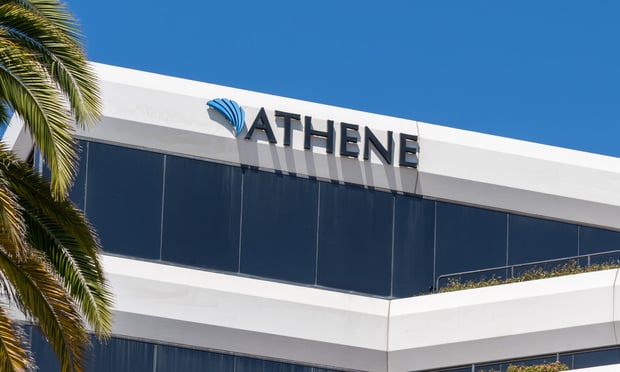 Healthcare reform might create a world in which employers pay penalties and send employees streaming into government and private exchanges to buy individual coverage.
Healthcare reform might create a world in which employers pay penalties and send employees streaming into government and private exchanges to buy individual coverage.
The Patient Protection and Affordable Care Act (PPACA) might create a benefits world in which typical employers pay penalties and send employees streaming into government and private exchanges to buy individual health insurance.
If Mitt Romney gets into the White House and kills PPACA, employers might still move on their own to create a similar “bring your own coverage” (BYOC) system. What would a BYOC system mean for the employers, their health insurers, and their benefits brokers and plan administrators?
One way to analyze the question is to look at Web forums for owners and would-be owners of nightclubs.
New participants often ask about the idea of setting up a “bring your own bottle” (BYOB) club. Other participants quickly ask whether some customers will bring in low-quality, or even lethal, grain alcohol; whether the BYOB club owner will face liability problems; whether the BYOB policy will affect the club's ability to attract and retain patrons; and whether the BYOB policy will lead to ferocious administrative hassles. Such as: What happens when some patrons' bottles go dry? What happens when some patrons are jealous of other patrons' bottles?
Similar questions can come up in discussions about a possible BYOC health benefits universe.
Shawn Pynes, a partner at Barney & Barney, an independent brokerage in California, chuckles when he thinks about the proposition that a BYOC system could make business managers' lives easier. “It's going to be more complicated,” Pynes says. “It's not going to be easier.”
The U.S. government got employers into the health benefits business after World War II, when it tried to control inflation by imposing controls on wage increases. To get around the restrictions, employers began offering workers non-cash benefits.
Rita Numerof, a St. Louis management consultant, says employees — and many employers — have come to expect employers to provide group health coverage. “The benefits have gotten richer and richer,” Numerof says.
The latest federal Bureau of Labor Statistics survey results show that 73 percent of U.S. civilian workers have access to employer-sponsored health coverage and 54 percent of workers participate in their employers' health plans.
Health policy specialists once hoped health maintenance organizations (HMOs) and tough care utilization managers could rein in skyrocketing health benefits costs. A few bad utilization management decisions later, benefits experts mostly gave up on the idea that the savings from aggressive utilization management programs were worth the risk of creating more HMO horror stories.
In 2000, National Underwriter Life & Health began writing about a new cost-management concept: The defined-contribution health plan. Consultants suggested that an employer could give each employee a fixed amount of cash. Employees could use the cash to buy their own coverage and get the employer out of the plan selection business.
In the real world, medical underwriting got in the way.
In the group market, underwriting has little effect on whether employees can get coverage. In the individual market, however, carriers in the states with reasonable health insurance rates use medical underwriting to control risk and keep rates reasonable. In most states, employers that shifted to pure defined contribution health plans had no way to ensure that their employees could get affordable coverage.
If PPACA survives its many foes, takes full effect in 2014 and works more or less as drafters expect, it could breathe new life into the defined-contribution health plan concept by requiring health insurers to sell coverage to individuals on a guaranteed-issue basis. Insurers could charge three times as much for the oldest enrollees as they charge for the youngest enrollees, but they would not be able to consider health problems, such as cancer or kidney disease, when setting rates.
PPACA is supposed to create a new health insurance purchase tax credit for people who have no access to affordable employer-sponsored health coverage and earn from 133 percent to 400 percent of the federal poverty level (FPL), or about $29,000 to $88,000 for a family of four.
Suppose John Doe has a family of four and earns $29,000 per year. The full cost of his coverage is about $700 per month. Analysts at the Congressional Research Service say the PPACA tax credit could cut Doe's share of the monthly premium to $83. Doe's share would rise to $230 if he earned $44,000 per year, and to $524 if he earned $66,000 per year. If he earned more than $88,000 per year, he'd have to pay the full cost of the coverage.
A PPACA employer responsibility provision will require employers with more than 50 full-time workers to provide a minimum level of affordable health benefits or else pay a penalty.
Small, cash-strapped employers may be quick to send their employees to the exchanges, but larger employers may have more trouble deciding what to do, Numerof says.
Dan Maynard, president of Connecture, a company that develops Web-based health insurance sales and exchange systems, says it's not clear whether employers really want to get out of providing any health benefits, or if they simply want to escape from the cost of insuring against health care claims risk.
Pynes notes that, in most of the United States, employers provide health benefits today because they want to attract and retain the best employees and maximize workers' productivity, not because any law requires them to provide health benefits. The PPACA tax credit would do nothing for higher-income workers, Pynes adds.
At companies that offer good health benefits today, the result may be that health plans will continue to look about the same, Maynard says.
For employers that do decide to shift to a BYOC system, insurance costs might be much lower, but administrative costs and administrative headaches could grow, benefits specialists warn.
Mark Yoest, a director with Deloitte Consulting, scoffs at the idea of the kind of business owner who offers good health benefits today simply e-mailing employees PPACA exchange contact information. “The consumer has really relied on the employer to provide some guidance,” Yoest says.
“It's not easy for employers to get out of the middle,” Pynes says. Employers that want to shift to a BYOC system without ruining employee morale will have to find someone to advise employees on how to cope, Pynes says.
What could a BYOC shift mean for insurers?
Bernard Tubiana, a principal with Deloitte Consulting, says the shift could create opportunities for a small insurer, a regional insurer, an insurer not known for participating in the group health market, or a company like Amazon.com or Wal-Mart to “figure out the magic sauce” for becoming a BYOC benefits market giant.
Maynard says a BYOC market could be especially friendly to insurers in the voluntary benefits market or the Medicare Advantage markets today.
Voluntary benefits insurers already know how to persuade workers to use their own money to pay for life insurance, disability insurance and supplemental health insurance.
Medicare Advantage and Medicare supplement insurance market players already know how to sell heavily regulated health insurance products to individuals without having much, if any, ability to use medical underwriting procedures to manage claims risk.
One thing that's noteworthy about the voluntary benefits, Medicare Advantage and Medicare supplement insurance markets is that health insurance agents are active in all of those markets.
Good group health insurance agents and brokers who want to operate in the BYOC universe should be able to find ways to stay in the game, health benefits market watchers say.
Traditionally, health insurers have marketed to brokers, brokers have golfed with employers and employers have generously and magnanimously provided health benefits for the employees.
“Health insurers have not been able to invade that ownership they [brokers] have over these employer relationships,” Maynard says.
In 2014, a health insurer that enrolls 10 auto body shop employees through an exchange program would probably be thrilled to see a broker help the body shop and the employees with the shift, Maynard says.
“That auto body shop is not going to hire a human resources person,” Maynard says.
PPACA is supposed to create an ombudsman program — a Navigator program — to help consumers understand the exchange system, but it's not clear whether that program will be a temporary program or a permanent program, and the Navigator program staffers are not supposed to help consumers decide which coverage to buy.
In some cases, Yoest says, employers with BYOC health benefits programs might handle the programs roughly the same way they handle worksite benefits programs. Individual health insurance marketers might come to see the employers as the gatekeepers who control access to the workers' attention.
For brokers and other BYOC advisors, limits on the availability of competent live human advisors could be a major constraint, Pynes and Maynard say.
When workers call for help with exchange bureaucracy, “the advocate at the other end of the line really needs to help them navigate,” Pynes says.
At Barney & Barney, getting a new enrollee advocate licensed takes 52 hours of training, and getting the new hire to be a skilled benefits navigator takes about two years, Pynes says.
For insurers, brokers and exchange managers, another BYOC shift challenge might be learning how to run business-to-consumer marketing programs.
Nital Patel, a partner at Lippincott, a brand strategy firm owned by Marsh & McLennan, says a company in the BYOC game needs to start by making sure that it can deliver what consumers want and that its own employees believe the company can deliver on its promises. A successful brand “needs to be rooted in something that's very true,” Patel says. “It's about empowering consumers and creating advocates.”
Patel says a company in the BYOC market will know it's succeeded when the customers themselves start marketing the company to their own friends and relatives.
Complete your profile to continue reading and get FREE access to Treasury & Risk, part of your ALM digital membership.
Your access to unlimited Treasury & Risk content isn’t changing.
Once you are an ALM digital member, you’ll receive:
- Thought leadership on regulatory changes, economic trends, corporate success stories, and tactical solutions for treasurers, CFOs, risk managers, controllers, and other finance professionals
- Informative weekly newsletter featuring news, analysis, real-world case studies, and other critical content
- Educational webcasts, white papers, and ebooks from industry thought leaders
- Critical coverage of the employee benefits and financial advisory markets on our other ALM sites, PropertyCasualty360 and ThinkAdvisor
Already have an account? Sign In Now
*May exclude premium content© 2025 ALM Global, LLC, All Rights Reserved. Request academic re-use from www.copyright.com. All other uses, submit a request to [email protected]. For more information visit Asset & Logo Licensing.





